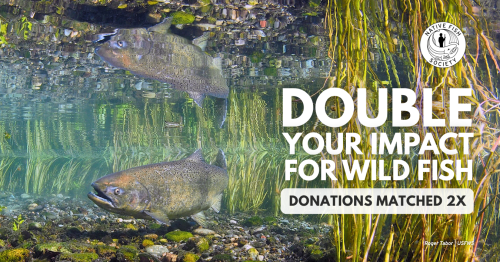Case Study: Rock Creek Hatchery and the Need for Strategic Prioritization
This is the third in a series of posts examining ODFW funding challenges and Native Fish Society's recommendations for reform. For an even deeper dive into SB 512A, you can read our written testimony to the Oregon legislature here. And we encourage you to sign our action alert asking Oregon legislators to oppose SB 512A. Check back for our next post on the Oregon Coast Coho success story as a model for effective conservation, and take a look at all the posts in this ongoing series at this link.
To illustrate the challenges with ODFW's current approach to funding and the need for strategic reform, we can examine Senate Bill 512A from the current legislative session, which focuses on Rock Creek Hatchery in the Umpqua River basin. This case provides a concrete example of how budget decisions made without a strategic framework can lead to questionable investments of limited public resources.
The Rock Creek Hatchery Situation
Senate Bill 512A seeks to appropriate $1.4 million to restore hatchery programs associated with Rock Creek Hatchery and conduct studies on predation and rearing practices in the Umpqua basin. On the surface, this might seem like a reasonable investment in fisheries management. However, several key factors make this expenditure questionable when viewed through a strategic lens.
Rock Creek Hatchery was destroyed in the 2020 wildfires, and its infrastructure remains largely unusable. More significantly, through ODFW's comprehensive hatchery facility assessment, Rock Creek Hatchery rated last among all state-owned hatcheries based on pre-fire performance data. The economic analysis revealed that the hatchery programs associated with this facility were among the costliest in terms of dollars spent per fish harvested. Alongside these poor metrics, advocates are concerned that the high rate of straying of hatchery spring Chinook salmon is negatively impacting the resilience of the wild population in the North Umpqua.
Despite these concerning indicators, SB 512A would allocate additional funds to maintain these underperforming programs and conduct studies that presuppose continued hatchery production at pre-fire levels. The result would be making the programs in the Umpqua basin even more costly than they previously were— all without addressing the fundamental questions about whether this represents the best use of limited resources for the watershed or the state.
The Need for Strategic Prioritization
The Rock Creek Hatchery situation illustrates why we need a strategic framework for ODFW funding decisions. Without such a framework, we risk allocating scarce resources to underperforming facilities and programs simply because they existed in the past, rather than because they represent the best path forward.
This approach creates what we've described in our testimony as a "whack-a-mole" approach that doesn't address systemic issues. Even more concerning, it sets precedents for future spending that may lead to tens of millions in additional expenditures without adequate return on investment. The $1.4 million requested in SB 512A is just the beginning. Rebuilding Rock Creek Hatchery would require much larger investments in the future—investments which would likely be unsustainable in the long run due to the existing and expected watershed conditions.
Our Recommendations
Rather than proceeding with funding for Rock Creek Hatchery programs without a long-term strategic plan and vision for the basin, we recommend taking a step back to assess the situation more comprehensively. The legislature should direct ODFW to develop and implement a science-based strategic transition framework to prioritize watersheds for management focused on wild fish production and pause further investment in Rock Creek Hatchery until this analysis can determine whether it represents the best use of limited resources.
This pause would allow time to determine the full funding needs of Rock Creek Hatchery over the long term if the facility were to be rebuilt, compile the funding sources available both immediately and long term, and analyze whether those investments would yield better returns if directed toward other ODFW projects that support wild fish recovery in the basin.
A century of indiscriminate hatchery fish planting has yielded a starkly negative return on investment across much of Oregon: collapsing wild fish populations and severely restricted harvest opportunities. With the significant funding challenges facing ODFW, we simply cannot afford to continue making investments based on historical precedent rather than strategic analysis and action. Oregon's fish, watersheds, and people deserve thoughtful consideration towards the most sustainable plan with a good return on our investment.


